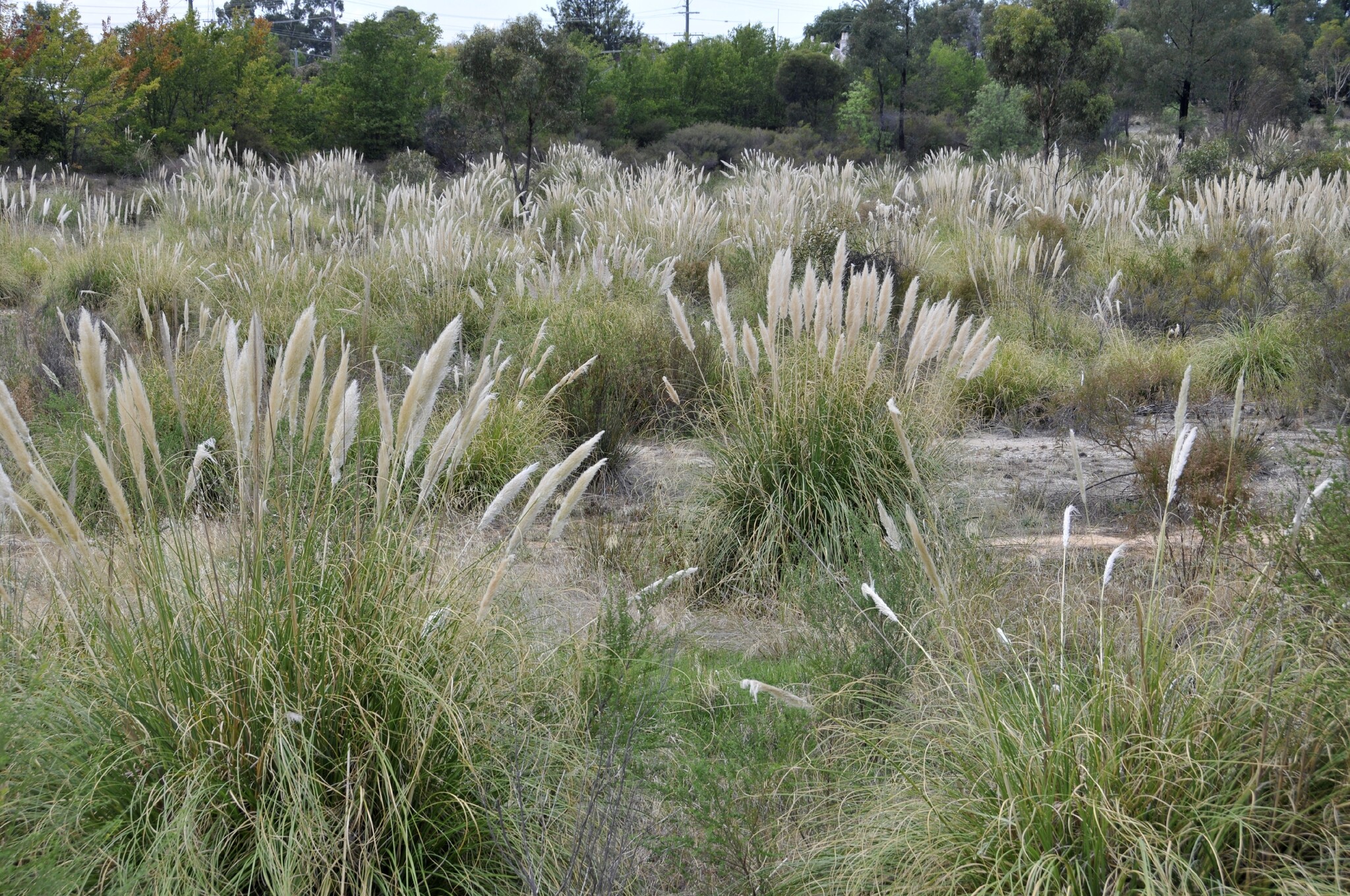
Argentinian name, cortaderia – cutting.
Mostly large, tussocked perennial grasses. Stems 1-4 m tall. Male and female plants separate in some species, female and bisexual in others. Leaves mostly basal, leaf blade linear (often with minutely rough cutting edges), flat, separating from the sheath and folded in bud; ligule a line of hairs. Flower clusters in large silky plumes. Spikelets 10-18 mm long, flattened, of 2-7 florets. Glumes 2, unequal, lower glume 1(-3) nerved, upper glume 1(-3) nerved, longer than the lemmas. Lemma 3-nerved with a terminal awn, hairless in the male, silky in the female. Palea relatively long, entire, awnless.
Grown for the attractive white or purplish plumes of flowers. However, Pampas Grass is now a significant environmental weed.
Seed.
Floral plumes used for floral decoration and sometimes deliberately coloured.
Plumose inflorescences; leaves often with lacerating margins.
About 24 species mostly from southern tropical and temperate South America, but also New Zealand (4) and New Guinea (1).
Zotov (1963).
Source: (2005). Poaceae. In: . Horticultural Flora of South-eastern Australia. Volume 5. Flowering plants. Monocotyledons. The identification of garden and cultivated plants. University of New South Wales Press.
